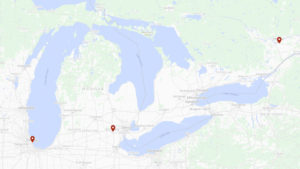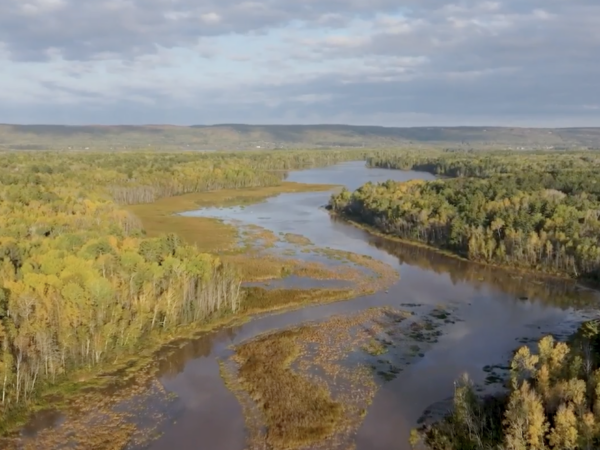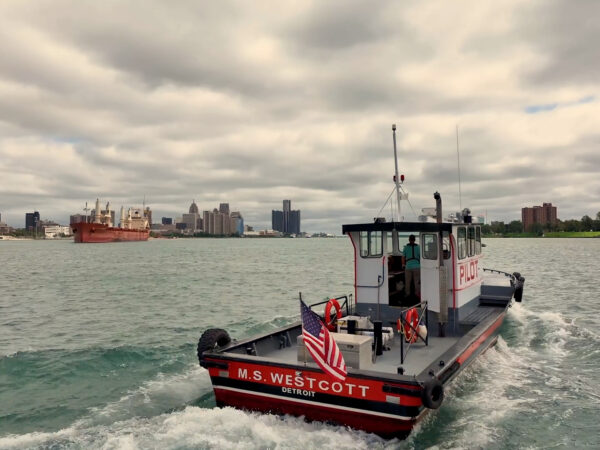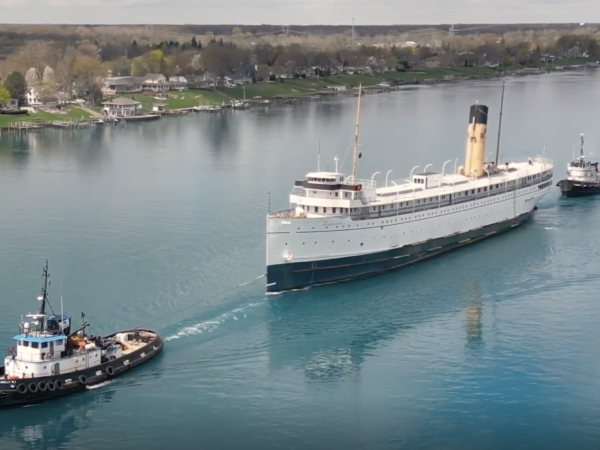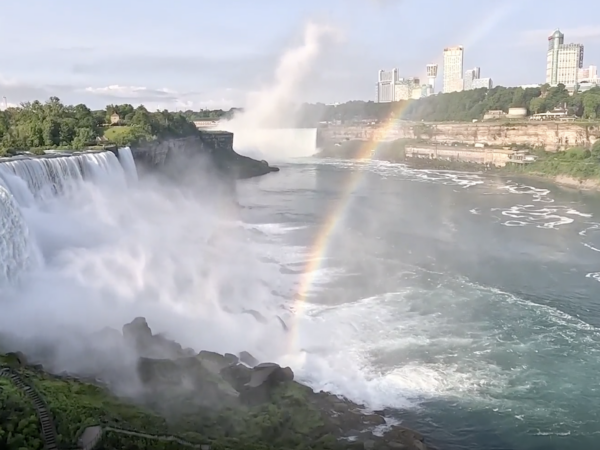The White House and the U.S. Senate have changed hands, and the federal government may move in a new — and in some ways dramatically different — direction. What does the future look like for the Great Lakes with Joe Biden in the Oval office? The economy, the environment, the climate and our health hang in the balance.
WHERE WE TAKE YOU IN JANUARY
Have a question about the Great Lakes or life in the region?
Ask Great Lakes Now, and if we can answer it, we might loop it into our coverage so others can learn too.
Submit Your Question
When to Watch?
Check your local station for when Great Lakes Now is on in your area.
Great Lakes Now
Premiered on DPTV
Tues, Jan 26, at 7:30 PM
STATIONS CARRYING THE SERIES
DPTV
Detroit, Michigan
WEAO
Akron, Ohio
WNEO-TV
Alliance, Ohio
WCML-TV
Alpena, Michigan
WDCP-TV
Bad Axe, Michigan
BCTV
Bay County, Michigan
WBGU-TV
Bowling Green, Ohio
WNED-TV
Buffalo, New York
WCMV-TV
Cadillac, Michigan
WTTW-TV
Chicago, Illinois
WVIZ-TV
Cleveland, Ohio
WKAR-TV
East Lansing, Michigan
WQLN-TV
Erie, Pennsylvania
WCMZ-TV
Flint, Michigan
WGVU-TV
Grand Rapids, Michigan
WPNE-TV
Green Bay, Wisconsin
WGVK-TV
Kalamazoo, Michigan
WHLA-TV
La Crosse, Wisconsin
WHA-TV
Madison, Wisconsin
WNMU-TV
Marquette, Michigan
WHWC-TV
Menomonie-Eau Claire, Wisconsin
WMVS-TV
Milwaukee, Wisconsin
WCMU-TV
Mt. Pleasant, Michigan
WLEF-TV
Park Falls, Wisconsin
WNIT-TV
South Bend, Indiana
WCNY-TV
Syracuse, New York
WGTE-TV
Toledo, Ohio
WDCQ-TV
University Center, Michigan
WNPI-TV
Watertown, New York for Ontario signal
WPBS-TV
Watertown, New York for U.S. signal
WHRM-TV
Wausau, Wisconsin
Agenda: Investment
SEGMENT 1 | Washington D.C.; Grand Rapids, Michigan; Allendale, Michigan
The Great Lakes Restoration Initiative (GLRI) was formed in 2009 to protect and restore the largest system of fresh surface water in the world: the Great Lakes. Since it was created, more than $2.7 billion has been spent on over 5,400 projects to clean up toxic hot spots, keep invasive species out of the Great Lakes, reduce the effects of toxic algae, rebuild natural wildlife habitats and educate the public on the importance of protecting the Great Lakes.
The GLRI was funded under President Obama at $475 million. Then, the budget was reduced to $300 million and has remained at about the level ever since. Funding for the initiative is expected to increase over the next 5 years, topping out at $475 million in 2026.
Read Great Lakes Now’s GLRI primer here.
Here are some other Great Lakes Now stories about GLRI projects:
- River Restoration: $390 million project offers new future for beleaguered Kinnickinnic
- Dams Across the Great Lakes: End of the line for aging infrastructure?
- Agriculture and Algae: Is the GLRI making a difference?
- In Perpetuity: Toxic Great Lakes sites will require attention for generations to come
- Great Lakes Moment: Cleanup of contaminated river sediment begins at old Uniroyal site
- Waters Restored
Agenda: Enforcement
SEGMENT 2 | Chicago, Illinois; Detroit, Michigan; Minneapolis and Superior, Minnesota; Straits of Mackinac;
The EPA and other federal agencies are charged with safeguarding the environment, including the Great Lakes — and a new President could mean big changes. Under the Trump administration, EPA staff was cut by more than 20%, and enforcement actions dipped sharply.
“You can bring less cases against polluters, so then you can have less compliance with environmental laws,” says Nicole Cantello, president of AFGE Local 704, which represents about 1,000 EPA workers in the Great Lakes region. “When there’s less compliance with environmental laws, more pollution goes out into the Great Lakes.”
Environmental advocates around the Great Lakes region hope the Biden administration will reverse those trends, and pursue environmental justice.
Enbridge’s Line 5 pipeline — the subject of a years-long battle between the Canadian energy transport giant and environmental advocates — seemed destined to remain a state-level issue, but since Michigan’s Gov. Gretchen Whitmer ordered the pipeline shut down by May 2021, and Enbridge’s announcement that they would defy Whitmer’s order, federal intervention is looking more likely.
Read Great Lakes Now’s primer on environmental enforcement here.
Here are some other Great Lakes Now stories involving environmental enforcement issues:
- COVID-19 Compliance: Agencies grapple with environmental protection in the COVID-19 era
- What Has the Trump Administration Meant for Water?
- Across the U.S., millions of people are drinking unsafe water. How can we fix that?
- Dam Investment: How does Michigan stack up against Great Lakes peers?
- Green Reset: COVID-19 offers opportunity for lighter environmental impact
- Regulation During COVID-19: Canadian, U.S. agencies lighten monitoring priorities
Agenda: The COVID Economy
SEGMENT 1 | Chicago, Illinois; Ann Arbor, Michigan; Ottawa, Ontario, Canada
The Great Lakes regional economy has taken a big hit from the COVID-19 pandemic and resulting business closures. How can the federal government respond? The first step to any economic recovery is getting the pandemic under control.
“Until we start working together,” says John Dickert of the Alliance for Regional Development, “to make sure that we keep the pandemic down while the vaccine is coming in, we’re not going to be able to rebuild this economy for quite some time.”
Some say the best way to reinvigorate the economy is rebuilding our region’s aging infrastructure.
Kelly O’Brien, executive director of the Chicago Central Area Committee, says the entire region’s infrastructure needs to get to a 21st-century level, and if Washington could make a difference.
“It would really move the needle here in the mega region in terms of being able to move people more seamlessly and that would help grow the economy,” O’Brien says.
Read Great Lakes Now’s COVID-19 and the economy primer here.
Here is some other Great Lakes Now work on the COVID-19’s impact on the region.
- Campus Clues to COVID-19: Sewage testing key to detecting early infections
- COVID-19 pushed people outdoors. Michigan’s ski industry is ready for them.
- Summertime Spike: Great Lakes parks a source of balm and vexation for many during COVID-19
- Drinking Water News Roundup: Illinois COVID-19 shutoff protections, Ontario First Nation evacuation
- Another Casualty of COVID: Testing declines for lead poisoning in Michigan
- Watching the Waters
Agenda: The Shipping Economy
SEGMENT 1 | Westlake and Middleburg Heights, Ohio; Burns Harbor, Indiana
Like most industries, shipping and related operations on the Great Lakes experienced a challenging year in 2020. With the economic downturn caused by the COVID-19 pandemic, the steel and manufacturing industries slowed down. That meant less demand for coal and iron ore and less need for those commodities to be shipped.
An economic recovery would help, but ask people involved in Great Lakes shipping what they really need from the federal government, and they’ll point to infrastructure. The new lock under construction in Sault Ste. Marie, Michigan is something the industry long wished for, but there’s also a need for help with lake ice.
“Hopefully we get another ice breaker built here in the Great Lakes to operate on the Great Lakes,” says Eric Pease of the Lake Carriers Association.“There’s been ice seasons, in particular 2013, 2014, and most recently 2019—where it’s had a huge impact on the shipping industry, the ports, the facilities, to make sure we can continue to move shipping here on the Great Lakes during the winter seasons.”
Read Great Lakes Now’s primer on shipping and COVID-19 here.
Here is other Great Lakes Now work on the shipping industry:
- Great Lakes Freighters: The latest on navigation, locks and icebreakers
- COVID-19 Comeback: Great Lakes businesses and scientists bounce back
- Fishing and Freighters: Great Lakes industries take COVID-19 economic hit
- Shipping Continues: Great Lakes shipping season opens with extra social distancing
- Enbridge now inspects freighters to avoid another anchor strike on Line 5
- Freighter Photos: Check out some stunning images of the vessels traversing the lakes
- Drop, Soo and Lock It
Agenda: Climate Change Response
SEGMENT 1 | Washington D.C.; Chicago, Illinois; Detroit, Michigan
President Trump announced in 2017 that the United States would withdraw from the Paris Climate Accord, whereas President Biden pledged to rejoin it on the first day of his presidency. He’s also said repeatedly that he’ll make addressing climate change a top priority of his administration.
Biden also has pledged to put the United States on a path to achieve net zero carbon emissions by t2050. The United States is the second largest emitter of greenhouse gas in the world, and according to United Nations Secretary-General Antonio Guterres, U.S. leadership is critical in the global effort to reduce the effects of climate change.
Any transition to clean energy should include more options for renewable power, says Samantha Willians, director of the Clean Energy Program for the Natural Resources Defense Council’s Midwest Region. Those could include more solar and wind farms, cleaner cars including more electric vehicles, and more efficient homes and buildings.
The No. 1 driver of greenhouse gas emissions in the United States is the transportation sector. Environmental advocates say under the Biden administration, you’ll see a renewed push toward public transportation and new standards for fuel economy in vehicles. All of these efforts will impact the Great Lakes states.
Read Great Lakes Now’s climate change primer here.
Here is other Great Lakes Now work on climate change and energy:
- Great Aspirations: Great Lakes states grapple with climate change and carbon
- What the Biden Administration Might Mean For Water
- Rollbacks, Climate, Justice: Environmental attorney on Biden’s commitments, opportunities and challenges
- What are Joe Biden’s views on two of the most controversial environmental projects in Minnesota?
- Great Lakes Energy News Roundup: Recognition of tribal treaties, Michigan Green Bank, former Upper Peninsula mine sites
- What’s next for the Enbridge Line 3 project in Minnesota? Construction. And protests.
- From Rust to Resilience
Featured Articles
Digital Credits
The Great Lakes Now Series is produced by Rob Green and Sandra Svoboda.










